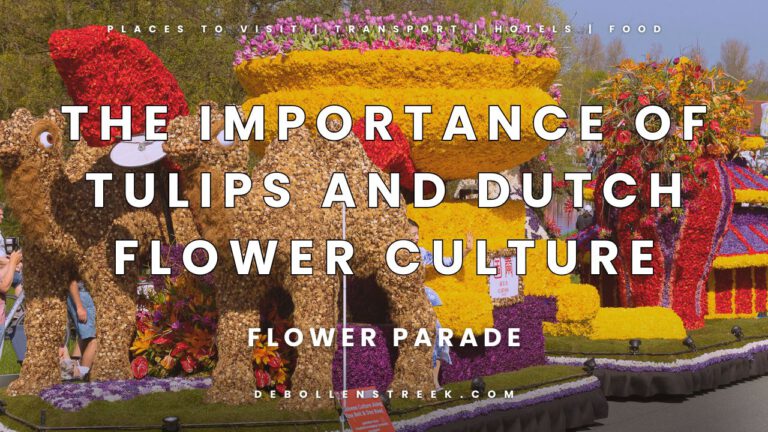How can I experience Dutch food? Maybe not the most taste full food in the world, but a good question after all. Dutch cuisine is a delightful mix of hearty, comforting dishes and sweet treats that reflect the country’s agricultural heritage and maritime history. Experiencing Dutch food is not just about tasting the dishes; it’s about understanding the culture and traditions behind them. Here’s how you can dive into the delicious world of Dutch food.
Experience Dutch Food: Introduction
Dutch cuisine might not be as internationally renowned as French or Italian, but it holds its own with a variety of unique and flavorful dishes. From rich stews and soups to sweet pastries and snacks, Dutch food offers something for every palate. The culinary traditions in the Netherlands are deeply rooted in its history and geography, with a focus on local and seasonal ingredients.
Experience Dutch Food: Traditional Dutch Dishes
Stamppot
Stamppot is a quintessential Dutch comfort food. This traditional dish consists of mashed potatoes mixed with vegetables such as kale, carrots, or sauerkraut, often served with a juicy sausage called rookworst. The creamy texture and savory flavor make stamppot a perfect meal for cold days .
Erwtensoep (Pea Soup)
Also known as snert, erwtensoep is a thick, hearty pea soup typically enjoyed in the winter months. Made with split peas, pork, and vegetables like celery, onions, and carrots, this soup is traditionally served with rye bread and smoked bacon. It’s a filling dish that warms you from the inside out .
Poffertjes
Poffertjes are small, fluffy pancakes made with yeast and buckwheat flour. They are typically served with powdered sugar and butter, making them a sweet treat enjoyed by both children and adults. Poffertjes are often found at markets and festivals, where they are cooked fresh on special cast-iron pans .
Haring (Herring)
Haring is a traditional Dutch delicacy that involves raw herring fish, typically served with onions and pickles. The fish is caught and prepared during the early summer months, known as Hollandse Nieuwe, when it is at its most tender. Eating haring is a must-do experience in the Netherlands, often enjoyed by holding the fish by the tail and eating it whole .
Bitterballen
Bitterballen are deep-fried, crispy meatballs that make for a popular bar snack. These bite-sized delights are filled with a savory beef or veal ragout and coated in breadcrumbs before being fried to golden perfection. They are usually served with mustard for dipping and are a favorite accompaniment to Dutch beer .
Dutch Cheese (Kaas)
The Netherlands is famous for its cheese, with Gouda and Edam being two of the most well-known varieties. Dutch cheese is typically enjoyed with bread, as part of a sandwich, or on its own as a snack. Cheese markets, such as those in Alkmaar and Gouda, offer an excellent opportunity to taste and buy a wide range of Dutch cheeses .
Experience Dutch Food: Dutch Street Food
Stroopwafels
Stroopwafels are one of the most beloved Dutch treats. These thin waffle cookies are made from two layers of baked dough with a caramel-like syrup filling in the middle. Stroopwafels are best enjoyed fresh from a market stall, where the warm syrup oozes out with each bite .
Kibbeling
Kibbeling consists of battered and deep-fried pieces of white fish, typically served with a garlic or tartar sauce. This tasty snack is a favorite at Dutch markets and seaside stands, offering a delicious way to enjoy fresh fish .
Patat (Dutch Fries)
Dutch fries, or patat, are thicker than typical French fries and often served with a variety of toppings and sauces. Popular options include patatje oorlog (fries with peanut sauce, mayonnaise, and onions) and patat speciaal (fries with curry ketchup, mayonnaise, and onions) .
Oliebollen
Oliebollen are Dutch doughnuts typically enjoyed during New Year’s celebrations. These deep-fried dough balls are made with raisins or currants and dusted with powdered sugar. They are a festive treat that can be found at holiday markets and fairs .
Kaassoufflé
Kaassoufflé is a savory snack consisting of a pocket of melted cheese encased in a thin pastry shell, then deep-fried until crispy. This cheesy delight is often enjoyed as a quick snack or part of a meal at fast-food outlets and snack bars .
Experience Dutch Food: Dining Experiences
Dutch Breakfast (Ontbijt)
A typical Dutch breakfast is simple and wholesome, often including bread, cheese, cold cuts, and spreads such as butter, jam, or chocolate sprinkles (hagelslag). Breakfast might also feature yogurt or porridge, accompanied by coffee or tea .
Dutch Lunch (Broodjes and Pannenkoeken)
Lunch in the Netherlands often consists of sandwiches (broodjes) made with fresh bread and a variety of fillings such as cheese, ham, or smoked fish. Pannenkoeken, or Dutch pancakes, are another popular lunch option, served sweet or savory with toppings ranging from syrup and sugar to bacon and cheese .
Dutch Dinner (Diner)
Dinner in the Netherlands can vary widely, but a traditional meal might include a hearty stew, meat, or fish, served with potatoes and vegetables. Dining out at a Dutch restaurant can also be an opportunity to try rijsttafel, an elaborate Indonesian meal that reflects the historical connection between the Netherlands and Indonesia .
Experience Dutch Food: Special Food Events and Festivals
National Cheese Markets
Cheese markets are a staple of Dutch culture, with the Alkmaar and Gouda cheese markets being particularly famous. These markets offer a chance to see traditional cheese weighing and trading, as well as taste and purchase a variety of Dutch cheeses .
Haring ‘Hollandse Nieuwe’ Festival
This festival celebrates the arrival of the new season’s herring. It’s a lively event where people gather to enjoy fresh haring, often with music, drinks, and festivities. The festival is a great way to experience Dutch seafood traditions and enjoy the unique flavor of Hollandse Nieuwe .
Sinterklaas and Christmas Treats
The holiday season in the Netherlands is marked by a variety of festive treats. Sinterklaas, celebrated on December 5th, features goodies like pepernoten (small spiced cookies) and chocolate letters. Christmas brings traditional foods such as kerststol (Christmas bread with dried fruit and marzipan) and oliebollen .
Experience Dutch Food: Regional Specialties
Zeeland Mussels
Mussels from the province of Zeeland are a culinary highlight. These fresh, plump mussels are often steamed with vegetables and herbs and served with bread or fries. Zeeland mussels are celebrated for their quality and flavor .
Limburgse Vlaai
Limburgse vlaai is a type of pie from the Limburg region, made with a yeast dough and filled with fruits like cherries, apricots, or plums. This delicious dessert is often topped with whipped cream and is a must-try when visiting Limburg .
Groningen Mustard Soup
This creamy, tangy soup made from local mustard is a specialty of the Groningen region. Often served with bread, this soup highlights the robust flavors of the region’s mustard production and makes for a comforting meal .
Brabant Sausage Rolls
Brabant sausage rolls, or worstenbroodjes, are a beloved snack from the Brabant region. These savory pastries are filled with seasoned sausage meat and baked to perfection. They are a popular treat, especially during holidays and festivals .
Experience Dutch Food: Modern Dutch Cuisine
Influence of International Cuisines
Modern Dutch cuisine is heavily influenced by international flavors, reflecting the Netherlands’ multicultural population. From Indonesian rijsttafel to Surinamese roti, the diverse culinary scene in Dutch cities offers a global food experience .
Experience Dutch Food: Popular Contemporary Dutch Restaurants
- De Kas: Located in Amsterdam, De Kas serves farm-to-table cuisine using fresh, locally sourced ingredients. The menu changes daily based on what’s in season.
- FG Food Labs: In Rotterdam, this innovative restaurant offers a molecular gastronomy experience, blending traditional Dutch ingredients with modern cooking techniques .
Experience Dutch Food: Practical Tips
Where to Try Dutch Food
To experience the best of Dutch cuisine, visit local markets, street food vendors, and traditional restaurants. Cities like Amsterdam, Rotterdam, and Utrecht offer numerous options for tasting authentic Dutch dishes .
Food Tours and Markets
Joining a food tour can be a great way to sample a variety of Dutch foods while learning about their history and cultural significance. Markets like the Albert Cuyp Market in Amsterdam or the Markthal in Rotterdam are perfect for exploring Dutch culinary delights .
Experience Dutch Food: How to Order and Eat Like a Local
When dining out, it’s helpful to know a few Dutch phrases such as “Een tafel voor twee, alstublieft” (A table for two, please) or “De rekening, alstublieft” (The bill, please).
Looking for more information on the beautiful Bollenstreek region? Check out our Agenda for upcoming events, explore exciting Activities to enjoy, or discover essential Information for your visit. Don’t forget to visit our partner Souvenir Shop Holland for unique gifts and keepsakes. For official travel advice, visit the Dutch Government website.



